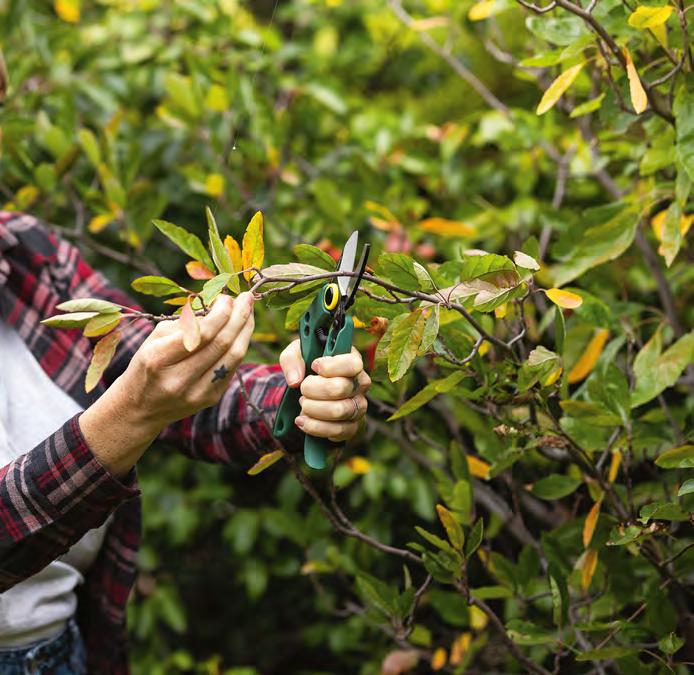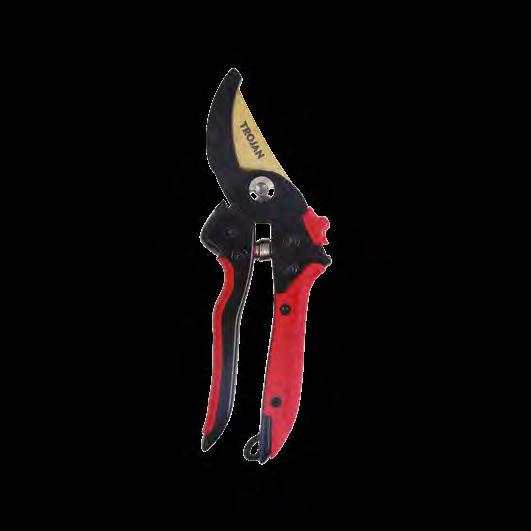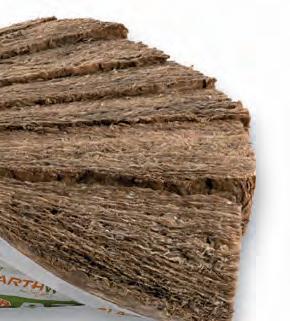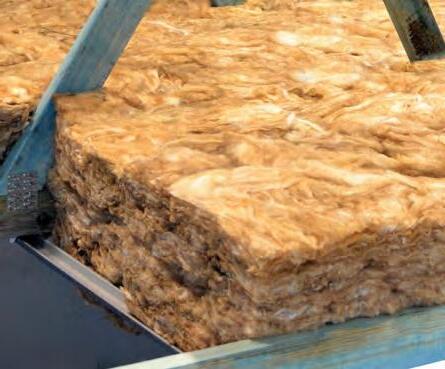
5 minute read
10 steps to a HEALTHY HOME
A WARM, DRY, ENERGY-EFFICIENT PLACE
TO LIVE SHOULD BE TOP OF THE LIST FOR YOU AND YOUR FAMILY’S WELLBEING
Words DONNA FLEMING
Acold, damp house is an unpleasant place to be during the winter months – and can also be bad for your health. The risk of respiratory illnesses such as asthma and chest infections increases if your home is chilly and has high levels of moisture. So whether you’re building a new home or renovating your current one, it pays to think carefully about how to make it as warm, dry and healthy as possible. Here are some helpful hints.
1 Plan ahead
Before any plans are drawn up, talk to your architect, draftsperson or builder about steps you can take and products you can use to make your home a healthier and nicer place to live. Check out the Healthy Home Design Guide (healthyhome designguide.co.nz), a one-stop resource for designers, builders and owners who want to create a healthier, more energy-efficient home. Compiled by more than 70 New Zealand experts, it covers everything from windows to insulation and provides simple recommendations.
Good insulation and ventilation are essential for year-round comfort – get those right and you’ll enjoy countless benefits
2 Get ex pert adv ice
Talk to an adviser about how your house could be warmer and drier. For example, Auckland Council has certified home-energy advisers who provide free consultations to residents and ratepayers, and Wellingtonians can sign up for a free assessment via Wellington City Council’s Home Energy Saver program. Also look out for free workshops. Eco Matters (ecomatters. org.nz) is a charitable trust that holds interactive sessions during which sustainability experts provide inspiration and budget-friendly tips on how to create a healthy home.
3 Switch on your rangehood
These appliances are not just there to suck out food smells – they also help remove moisture produced during the cooking process. According to research carried out by the University of Otago, cooking can produce up to three litres of moisture a day. As Tane Poulson of Monaco Corporation (which sells Everdure and Blanco rangehoods) says, “If you’ve got pans simmering on a stovetop and lots of steam escaping, switching your rangehood on can make a noticeable difference to the moisture levels in your home.”
Use a rangehood to reduce moisture

4 Insulate your home
A crucial component of a healthy and energy-efficient home is good insulation. According to the Insulation Association of New Zealand, it is the single most effective measure you can take to keep your home warm. Insulation in roofs, ceilings, walls and floors prevents warm air from escaping, resulting in your house heating up faster and requiring less energy to stay warm. When your home is more energy efficient thanks to good insulation, you’ll save money on your power bills – insulation in the ceiling alone can reduce heating and cooling costs by up to 40 per cent*.
5 Install a home ventilation system
Ventilation is also vital for a healthy home. Without it, moisture can build up, leading to mould and mildew. Home ventilation systems, which work by getting rid of stale, moist air and drawing in fresh air from outside, are a very effective way of helping to keep your home dry. They also help to maintain air quality and get rid of nasty pollutants that can take a toll on your health.
6 Invest in good heating
Heat pumps are a particularly efficient form of heating (and cooling); in fact, they’re the most energyefficient method of using electricity to heat or cool your home: a heat pump’s heating output is three to four times the amount of energy it takes to run it. That’s because, instead of generating new heat, it hunts out heat energy present in the air outside and transfers it into your home, explains Troy Spence of Rinnai, which makes a range of pumps. “Heat pumps are amazing pieces of technology,” he says.
“Even at ambient temperatures below 0˚̊̊C, they can continue to capture enough heat energy to warm your home.” That’s not only good for the environment, it means the amount of energy needed to heat – or cool –your home can be significantly reduced, and of course that also means a lower power bill.
7 Opt for thermal curtains
Your home can lose as much as 40 per cent of its heat through singleglazed windows**, so it makes sense to cover them so warm air stays in the room, and cold air is kept out. Thermal curtains create a barrier that helps to keep the room warm in winter and cool in summer. Mary Halliday of Smart Home Products explains, “As well as being great for insulation, they can also reduce light and noise.”





Pelmets help stop heat escaping up or, for a quick fix, roll up a towel and pop that along the curtain rail.

8Use a ground moisture barrier
If you have a crawl space or basement under your house with a loose dirt floor, it’s going to produce moisture. Subfloor moisture can be one of the biggest sources of damp in some Kiwi homes – according to BRANZ (Building Research Association of New Zealand), as much as 40 litres a day can be produced under a 100sqm house, even if the dirt looks dry. This moisture can rise up through the floorboards into the home, causing rot, mould, mildew and structural damage, as well as health problems. A ground moisture barrier, also known as an on-ground vapour barrier, is a polythene sheet that can prevent rising dampness when laid on the dirt under your house.
Keep plants near windows under control, but check plant guides for the best time of year to prune them

9 Include ex tractor fans in bathrooms
Ventilation is particularly important in bathrooms – steam from each shower or bath can add up to 1.5 litres of water to the moisture content of a home. If not extracted effectively, steam will very quickly create unhealthy – as well as unsightly – mould and mildew on ceilings, windowsills and walls.
10
Trim ba ck vegetation around your home


When it’s shining, the sun is a wonderful source of radiant heat that can warm up your house. But if there are trees and other vegetation shading your windows, you won’t be able to make the most of it. Consider trimming back any large trees and shrubs before you start building, if appropriate, or place windows where they won’t be blocked by vegetation. For established homes, invest in good-quality loppers, clippers, secateurs and pruning saws, and use them regularly to keep trees, hedges and bushes near windows well trimmed.
8 9
1 Expol 1200mm x 560mm x 60mm R1.4 underfloor insulation in White, I/N: 0335254. 2 Rinnai ‘Pro Series’ 2.6kW heat pump, $1,939 (including standard installation), I/N: 0412189†‡. 3 Everdure 60cm 900m3/hr stainless steel rangehood, $218, I/N: 0259210. 4 Fiskars lopper & secateur set, $37, I/N: 0190181. 5 Moroday ‘Econo-Seal’ weather seal tape in Grey, $9.98, I/N: 4061864. 6 HPM square exhaust fan with humidity sensor, $131, I/N: 0166178. 7 Smart Home Products ‘Seville’ 220-270cm x 223cm thermal eyelet curtain in Silver, $99, I/N: 0376493. 8 Earthwool glasswool 1200mm x 460mm x 330mm R7.0 ceiling insulation batt, $84.89 ($19.29/sqm), I/N: 0410680. 9 Trojan bypass heavy duty pruner, $15, I/N: 0246311. Some products are not available at all Bunnings stores, but may be ordered.
Scan the QR code
Try out our ideas to make your home warm and snug this winter: bunnings.co.nz/healthy-homes


























